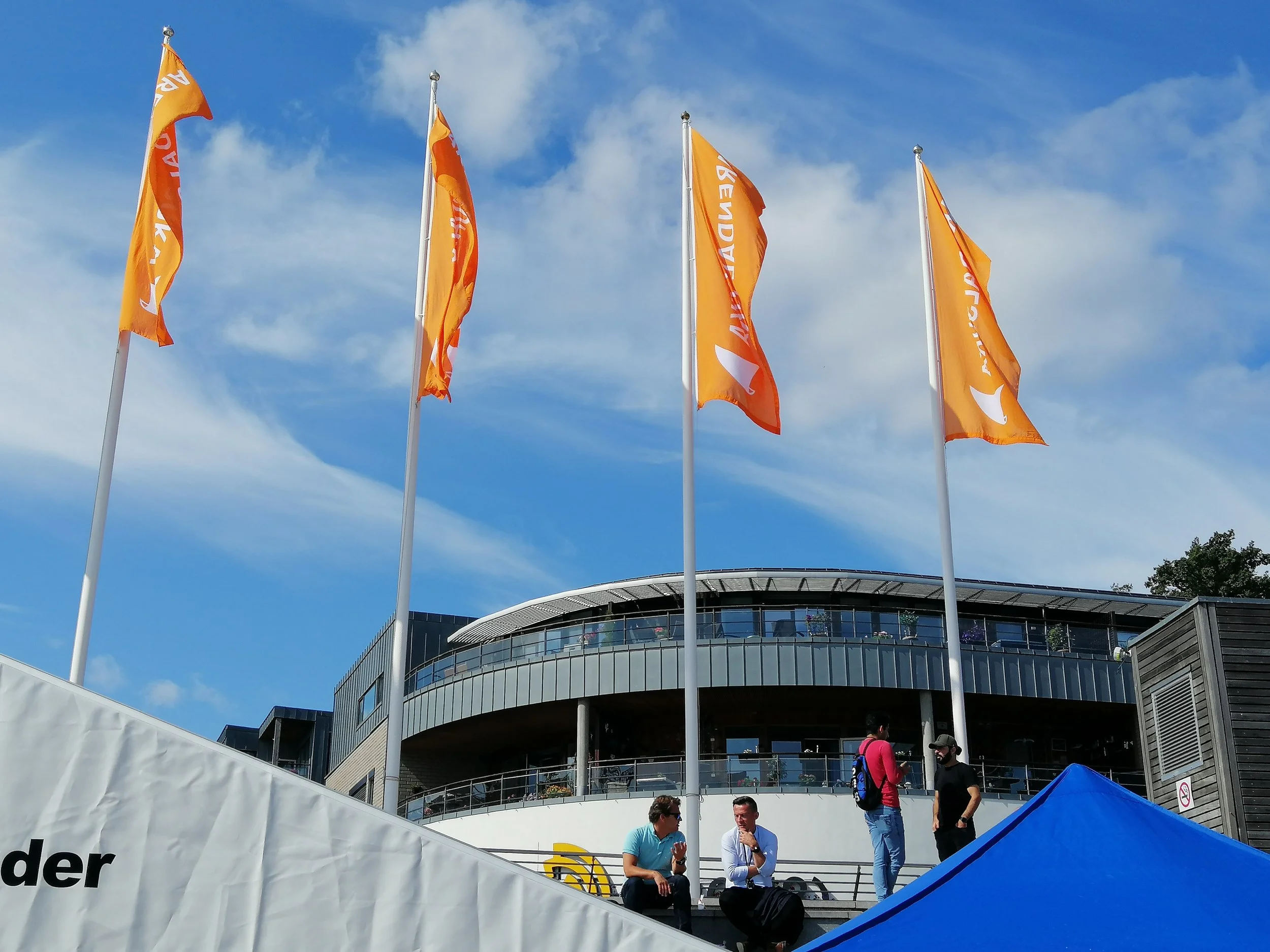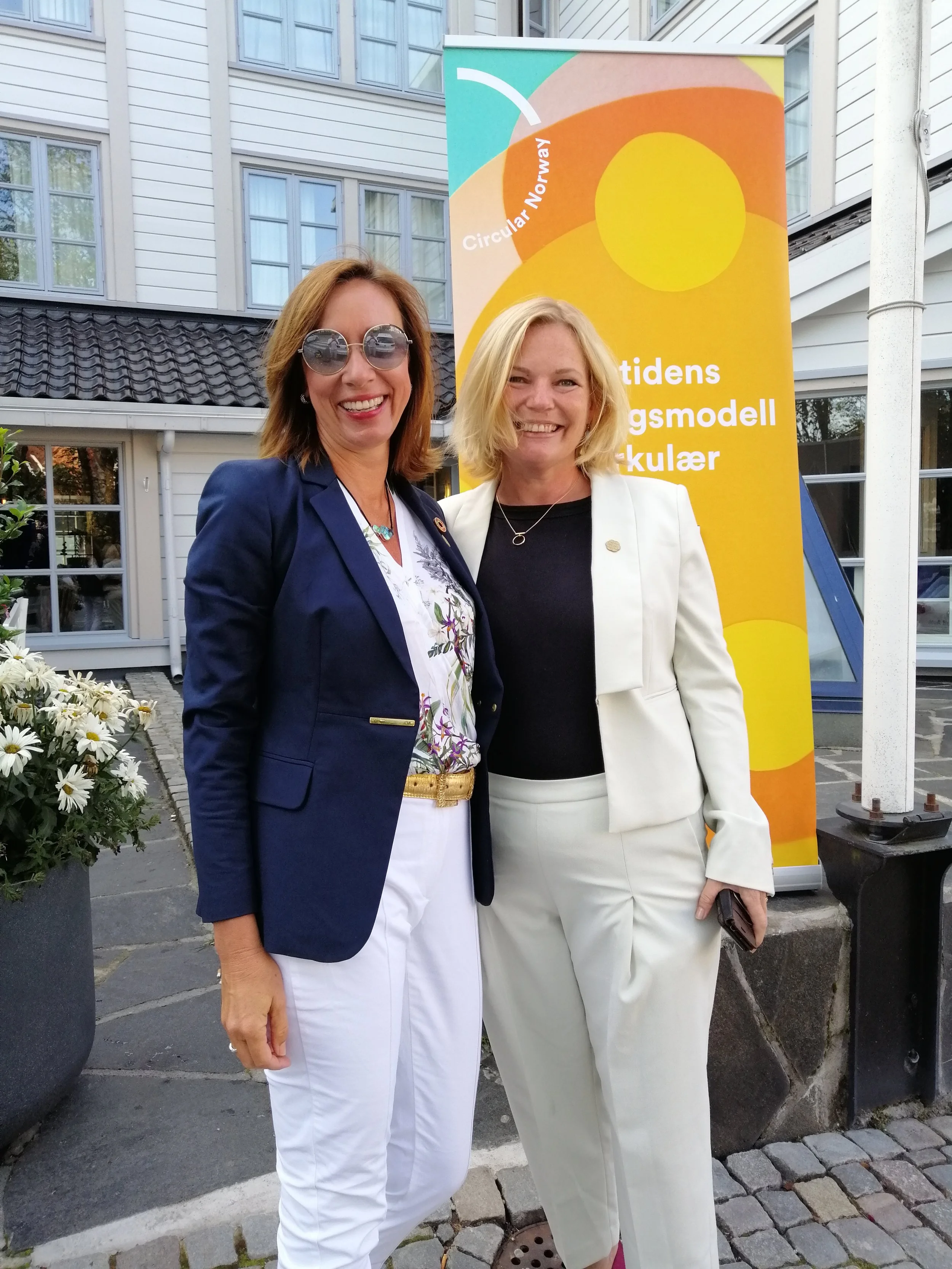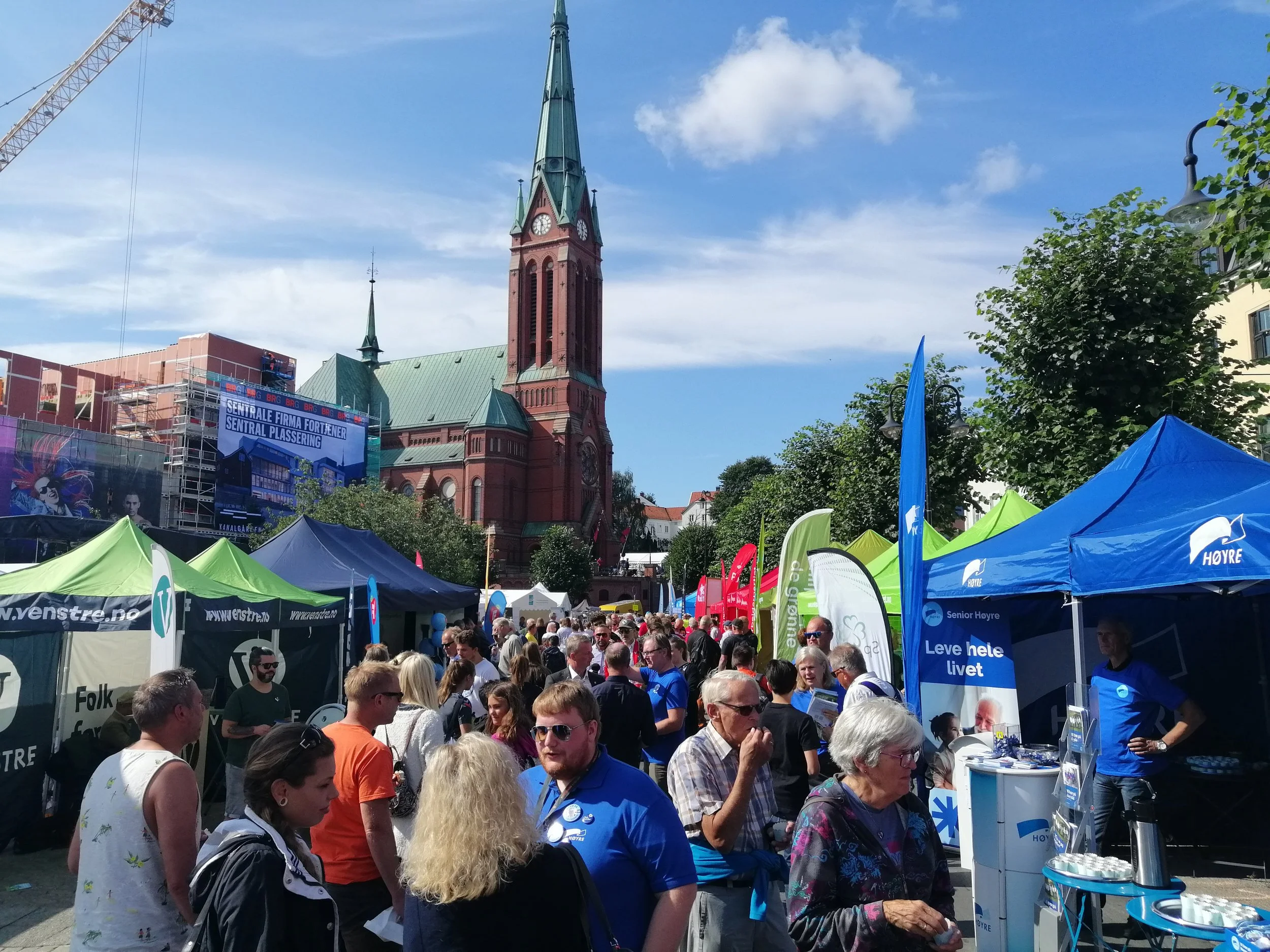CC visits Circular Norway at Arendalsuka: Report included
On Wednesday, August 14 2019 Ladeja Godina Košir, Executive Director of Circular Change visited Arendal in Norway to discuss the latest developments in circular economy with Norwegian change-makers. We’re sharing a special article on the event, written by our partner platform Circular Norway. To access the original text, follow the link.
We need to explore and ensure that our cities become circular
17 august, 2019
In a full room on Wednesday morning, August 14 2019, leaders from the UN, the international circular economy movement, Norwegian industry organizations, and representatives from cities across Norway (Oslo, Longyearbyen and Kongsvinger) gathered to discuss the road to more sustainable, smarter and circular cities.
Today, the world is only 9% circular, according to an international method for measuring resource reuse. This means that only 9% of the value in the economy returns to the cycle, yet we only have 11 more years to reduce greenhouse gas emissions by 44%. To solve the climate challenges we are facing, the circular economy is a toolbox that regions, countries and cities can and should use. When Circular Norway was launched two years ago at Arendalsuka, there was only one event discussing circular economy. There is clearly a great willingness to change and a great interest in circular economy with close to 15 events on circular economy at this year’s Arendalsuka. But even though there is great interest at Arendalsuka, circular economy is not key to the local elections in Norway this fall.
We must understand the present situation and establish standards
If Norway and the rest of the world is going to reach the agreed climate goals, we must aim higher. We can only change what we measure. Circular Norway, Shift (formerly Norway 203040), and Virke have therefore initiated a Norwegian Circularity Gap Report which will be part of the European work for the transition to circular economy. The study will reveal how circular Norway is and point to areas where Norway has the greatest potential for increased sustainability and value creation. The 3rd Global Circularity Gap Report will be presented at the World Economic Forum in Davos in January 2020.
In addition to knowing the current situation, it is essential to develop global standards to measure circular economy and increase demand through tenders and procurement processes. Therefore, work is underway to develop Global ISO Standard TC 323.
Cities exist to create good lives
China used more cement in three years than the United States used in the 20th century, Forbes reported. “We cannot use new materials endlessly,” warned Ladeja Godina Kosir, Chair EU Commission Circular Economy Stakeholder Network, and founder of Circular Change, “as our planet does not have infinite resources”. So how do you build and create cities where people can live good lives? By 2050, 66% of all people will live in cities. “The cities must exist to create good lives,” Kosier told the crowd. «Because we’re moving from a structured to a systemic change, we need a holistic approach as well,» Kosir said, recommending everyone to read The Kyoto Manifesto for Global Economics.
Templates and plans on how to change cities to become circular are a linear way of thinking, Kosir explained. “We have to learn from each other and understand what has worked. We have to dare to see how each city is unique to develop circular economy models for each city,” she concluded.
In 6 months, 21 cities in India will have no water. The circular economy must solve the real problems urged Kari Aina Eik, UN Director for Smart Sustainable Cities. They have developed a circular approach for cities that look at five areas:
Access to data
Global learning and networking with expertise
Technology and digitalization
Innovative financing mechanisms
Personal involvement
By 2019, the circular city guidelines will be in place. “Ten cities in Norway have already asked to participate in the work we do and here Norway can really take on an internationally leading role. Ålesund is the first city to have a digital twin. This is Norwegian technology at its best,” concluded Eik.
A major change is the increased understanding of the excessive use of resources and how businesses and individuals are connected to nature. Through globalization, digitalization and technology we understand more. «This increased collective understanding is the biggest driver of change,» opened Natural State’s Einar Kleppe Holthe. “With Norway’s trust and openness, we must develop new solutions, share them and work together to implement them”, Holt urged. Circular economy is a natural value proposition in an urban environment.
Three Norwegian cities focusing on circular economy
Håkon Jentoft, EU Urban Agenda project manager EU Circular City and REN Oslo, is currently coordinating the EU project on circular cities headed by Oslo. This is the result of 14 partnerships between cities, Member States, EU partners and organizations. Based on the expertise of the partners, the project has selected 12 action points that look at better regulation, better financing and increased need for knowledge.
The Kongsvinger region has joined forces with Circle Economy and Circular Norway to conduct a Circular City Scan of the Konsgvinger region to understand how to move the circular economy from words to action. The analysis will focus on the value chain in the real estate and construction industry and will take 12 months. «Citizens and local politicians are excited to see the results of Norway’s first City Scan,» said Lise Selnes, mayor of Nord-Odal.
Svalbard and Longyearbyen know and experience climate change. After dramatic landslides and snowfalls, the city is now being rebuilt to ensure safe homes. “The scientists, the hunters and the adventurers always reused everything. There was a culture for that here at Svalbard, and we want to continue that,” said Hege Walør Fagertun, administration manager, Longyearbyen local government. The 160 new homes to be built by 2021 will be built with material from the 140 houses that will now be demolished in the exposed area.
Public procurement to secure a future circular economy
“Acquisitions and public procurement must include more than just the financial aspects,” Vibeke Nørstebø in SINTEF highlighted. Christine Lundberg Larsen, from Accounting Norway, added that funding is important to bring about the transition to circular economies and this requires sustainable business models. “Now is the time for us boring people! We need to have a framework in place to ensure that capital is moved so that we get changes and the green shift. We need to have tax and accounting rules that deviate from linear logic and reflect a circular economy,” Larsen summarized.
Take-aways form Arendalsuka: 10 tips on what Norway can do to accelerate circular cities
Norway must look at its history and heritage. How does Norway stand out from others and how can we build on this?
Norway must continue to explore, share knowledge outside of Norway, and take leadership.
Trust and openness are unique values in Norwegian society. Trust is also the most valuable currency.
There is a need to find new ways to regulate waste.
Norway must provide municipalities with formal frameworks and develop a climate budget.
Framework conditions must be in place to assist in becoming circular.
Smaller municipalities have limited resources, so central authorities must provide funds and expertise to ensure that the circular economy is implemented.
The Oslo City Council must set circular economy as a priority to ensure that Oslo continues to be a good place to live in the future.
International and national expertise must be made available to the municipalities.
Municipalities must test, dare to fail, because there is no way to the circular economy.
A national circular economy strategy must be in place after an analysis of where we are today.




